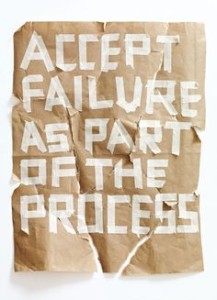If there is one truth about behavior change – it’s that you’re going to screw up. You’re supposed to screw up. That’s how you gain experience and figure out what works.
However very few behavior change products design for ‘failure’. And when they do, they don’t do a very good job at it. Often teams put the setback recovery feature as a nice-to-have later. It’s not. It’s critical. Every single one of your users is going to go through a set-back. Some will self-recover. Most will just drop.
As soon as your identify that a user is not following through effectively:
1. Stop Regular Triggers:
These are beginning to suffer from trigger blindness or worse: negative trigger association. I think most behavior change products die when users begin to associate guilt with the products triggers. That leads to actively avoiding your product to avoid the pain. This is how my company GoalTribe died.
2. Re-engage with a new, surprising trigger
Your user has begun to ignore, or actively avoid, your normal cues for action, so you need to reach out with something new to get their attention. You might try dramatically varying the trigger language, graphics, sounds, colors etc.. Try reaching out through a different channel. Perhaps email or sms. At the extreme, you could trigger another user, or a live coach, to actually make a phone call. For email, consider classic email marketing techniques to get emails opened – generating curiosity is probably the most powerful technique: “Congratulations Robin! You found it!” — Congratulations? Found what? I better open the email to find out!
3. Normalize the experience:
4. Ego Boost
You can go beyond normalizing the experience to actually building up user’s self-efficacy (there belief in their ability to be successful). Consider saying things like “You actually stayed strong for 3 days longer than our average user!”. Look for ways to spin the statistics that help them feel above average in their success thus far.
5. Neutralize shame, guilt, and embarrassment:
6. Re-establish hope:
7. Get a tiny re-engagement action immediately:
8. Celebrate copiously:


